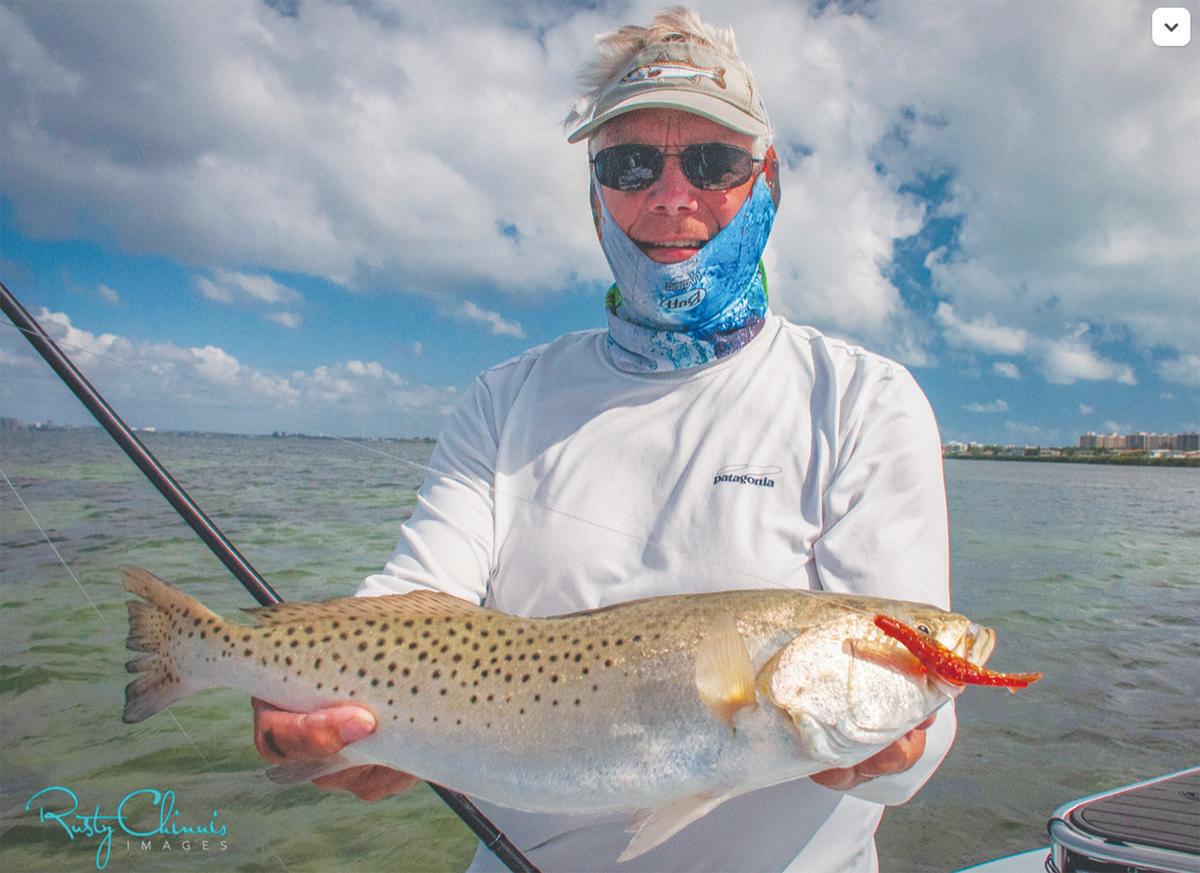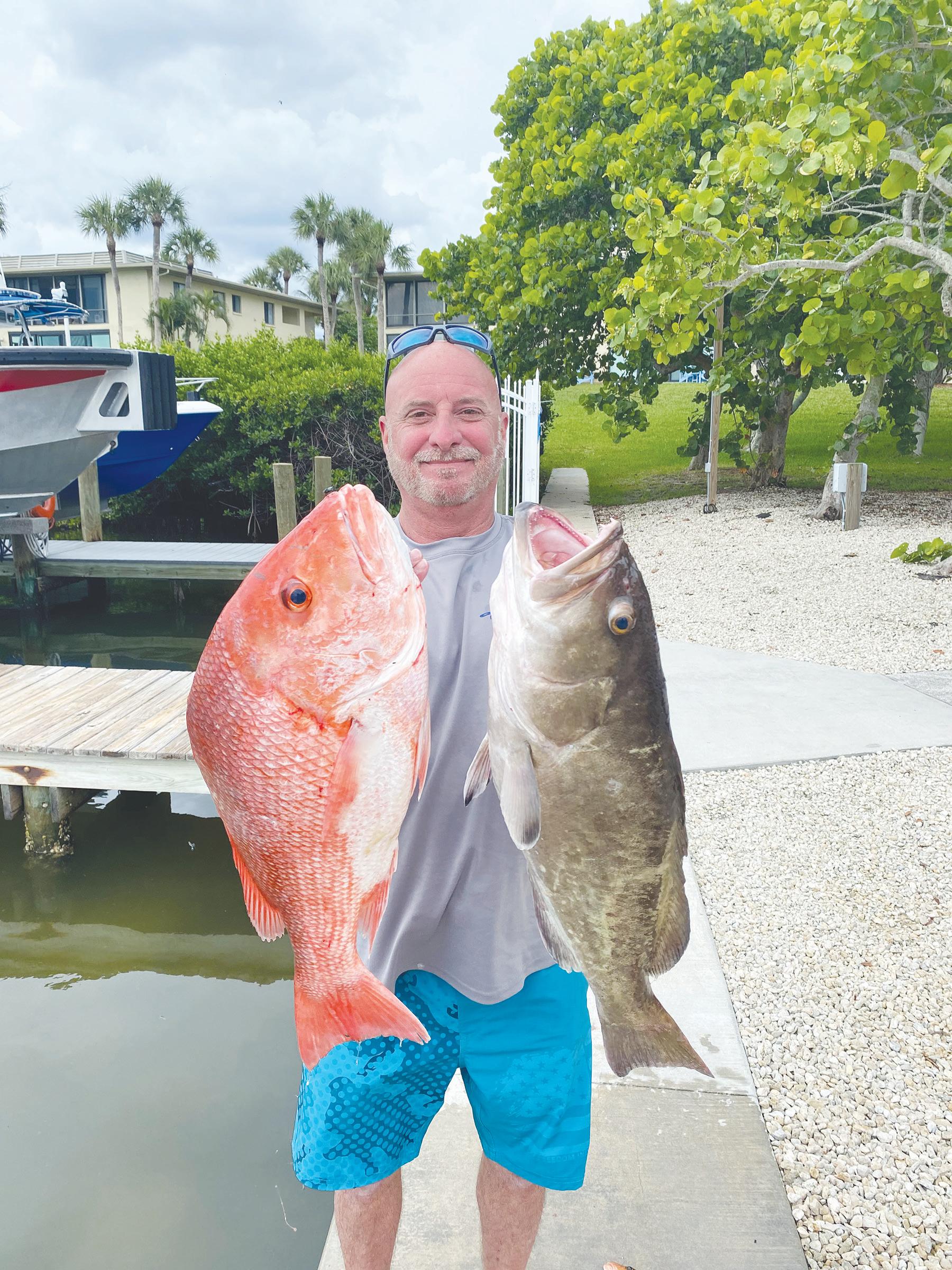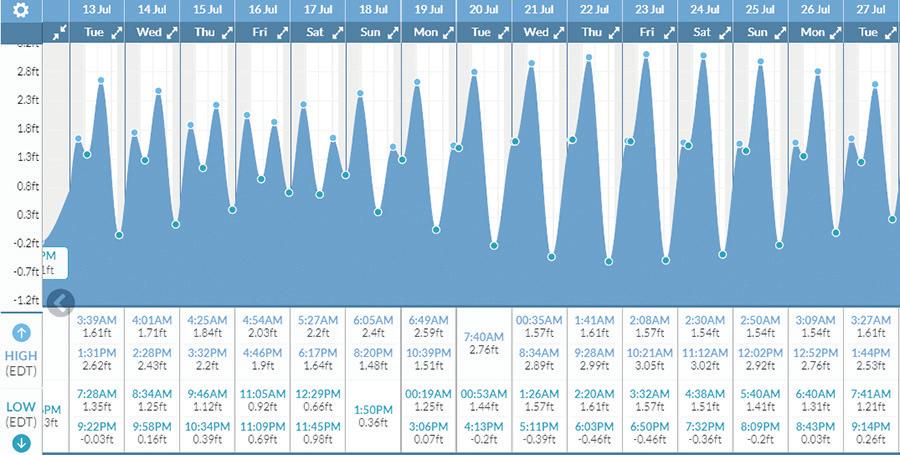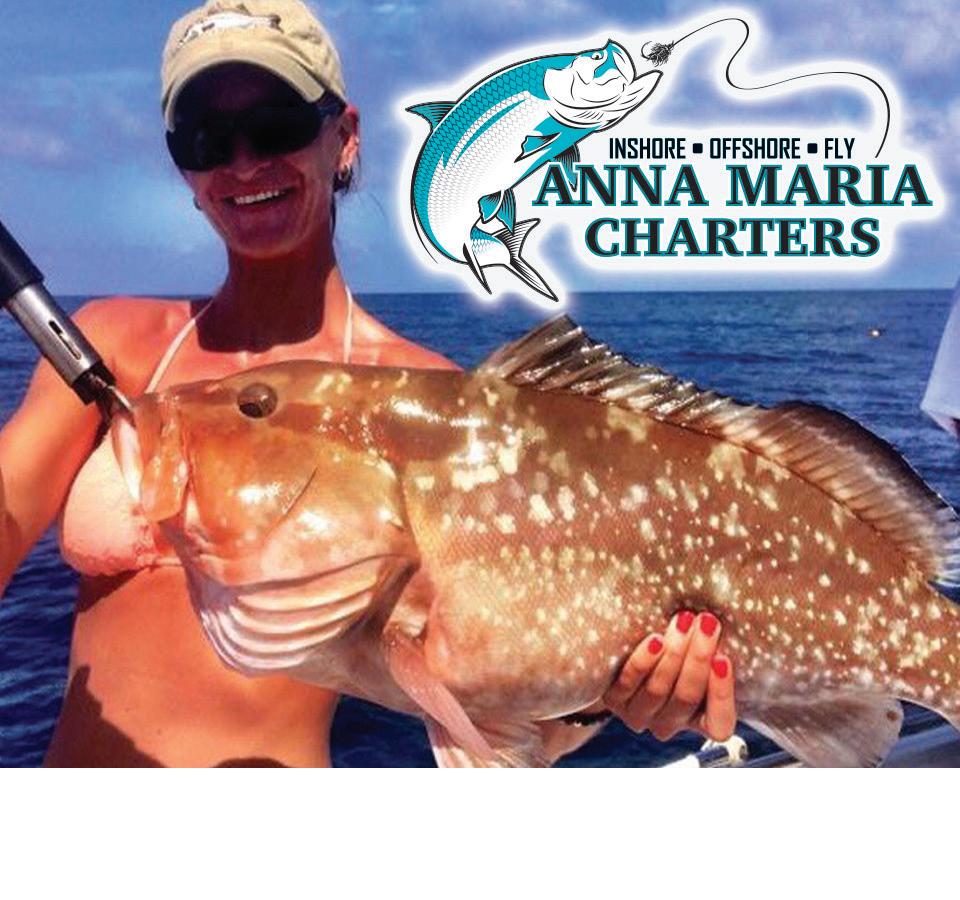
6 minute read
OUTDOORS
16 THE SUN OUTDOORS JULY 14, 2021
How to catch sea trout
Reel Time
RUSTY CHINNIS
Sea trout have always been a target of local anglers, mostly as a food source but rarely by fishermen seeking a trophy. Most would rather target redfish, snook and larger species like tarpon and kingfish. The average Gulf coast trout weighs in at about 2 pounds and doesn’t put much of a bend in a light fly or spinning rod. Larger trout are harder to find, are much warier, and a worthy adversary on any tackle.
In the early 80s, it wasn’t uncommon to catch an 8-pound trout during the late winter and early spring. By the mid-80s, a large trout was hard to capture on any tackle. The net ban that was enacted in 1995 gave anglers great hope for a resurgence in trout populations. The net ban helped restore trout populations, but the anticipated resurgence of trout proved uneven at best. In the last few years, catching larger trout from 4-6 pounds has been a real possibility for conventional and fly anglers who are patient.
Traditionally, the best time to target trout is during the months of March, April and May. The months of December through February can also be good options for trout as they forage for food during the lean winter season. In late summer, late outgoing tides on the full and new moons can also produce some large specimens.
Sight fishing trout requires a stealthy approach. A wading angler moving too quickly through the water or rocking an approaching boat while casting can spook trout. For any measure of success, move extremely slowly and avoid any errant sounds like a push pole hitting the boat or a rustling anchor chain that will telegraph an angler’s presence.
Flats with healthy grass beds with white sand holes and edges provide cover and forage for baitfish, shrimp and mullet, and are prime habitat for large trout. When picking a fly or plug, try to mimic the prevalent forage food. In local estuaries and the open bay, mullet may be the dominant food source, but trout are opportunists and will pursue glass minnows, shrimp, pilchards and other available food sources. The pattern varies depending on the season and water temperatures. During times of low visibility and low tides, anglers can move their efforts to the deeper edges of flats, the drop-offs into rivers and bays and the deep edges of oyster bars.
Fly leaders should be long and tapered (up to 12 feet) with no more than a 30-pound bite tippet. I prefer a premium 20-pound fluorocarbon bite tippet. While it’s possible to catch big trout on a larger tippet, I think the smaller diameter is best for the biggest and wariest trout. Your approach, even on foot, is very important. One of my favorite ways to hunt big trout is with a top water plug or popper. Plugs and noisy poppers can actually scare big trout when the sun is high, but are deadly early in the morning and just before dark. When wading, shuffle your feet and move slowly to avoid a pressure wave. Fly fishers need to be stealthy and avoid disturbing the water when lifting the line for another cast. Every advantage is necessary in the hunt for big trout.
This is a game in which anglers may have to cover a lot of water. When fishing for trout, never run the flats, looking instead for surface action, including schools of baitfish, mullet and diving seabirds. Top producing flies include the Clouser Deep Minnows, Lefty’s Deceivers and top water poppers like the Garthside Gurgler. Some of my favorite plugs are the Heddon “Zara Spook,” the MirrOlure “Top Dog” and the Rebel “Jumping Minnow.”
Now might not be “prime” time to target trout in local water, but it’s a good time to perfect your approach. Many of the trout you catch will be unwanted and undersized, so remember to handle with care and release them quickly. Release them in the water if possible and always wet your hands if you handle them. Trout might not be glamorous but they are a worthy adversary for local anglers. Always remember to check regulations before keeping any fish.
A fat Sarasota Bay sea trout is always a possibility for savvy anglers.
RUSTY CHINNIS | SUN












Good water, weather locally bring on the bite
CAPTAIN DAVE WHITE
The weather has been ideal for us here at Anna Maria Charters lately. The bite inshore and offshore have been great. The water our way is good and clean, and we hope it stays that way.
Inshore, Captain Johnny Mattay is running our inshore trips for mangrove snapper, snook, spotted seatrout and the occasional gag grouper. He’s also targeting sharks for clients that want a bit more of a scrap.
Offshore, I’ve been on the red snapper, red grouper, yellowtail snapper, mangrove snapper, and gag grouper. Sardines, pilchards, and pinfish are my bait of choice out there. I’m fishing from 30-60 miles out depending on the species and the clientele.
Business is staying exceptional on our Island. With people not traveling abroad, it’s made little areas like ours extremely sought out. We’re taking full advantage and grateful for it, as our crowds could fizzle along with the water quality that drew us Islanders and the visitors here. Let’s hope we can address it and get our water issues figured out, for the sake of the future of our Island and for our children.

CAPTAIN DAVE WHITE | SUBMITTED Charles Alexander, of Bradenton, shows off an American red snapper and big gag grouper. Caught with Captain David White of Anna Maria Charters.

WWW.SURF-FORECAST.COM | SUBMITTED This graphic illustrates the projected high and low tides in Bradenton Beach.
King tides possible third week of July
Lt. John Cosby from the Bradenton Beach Police Department recently informed city commission members that high king tides are possible in Bradenton Beach later this month. In doing so, Cosby cited information provided by the Surf-Forecast.com website. “We have a king tide coming this month. It starts the 22nd and goes to the 25th or 26th (Monday). The last four days we will be three feet above mean high tide. We’re probably going to have some breach on Avenue A and up in the Sandpiper trailer park,” Cosby told the commission on July 1. “It’s possible we could see some flooding from the king tide. We’re going to talk to a couple individuals in each neighborhood and have them help us get the word out. It may happen, it may not, but last time we totally got caught off guard and the information was there. We missed it and we’re not going to miss it again,” Cosby said. According to the Monday, July 12 Surf-Forecast.com tide chart, the high tide is also projected to reach 2.9 feet on Wednesday, July 21.











